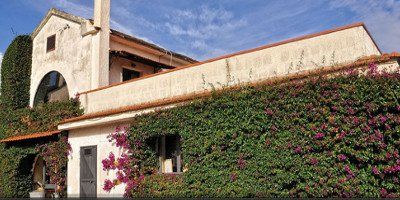
His account of the differences between Aglianico from Taurasi, Benevento and Caserta (where Falerno wines come from) is very insightful and he also tells us why the white wines of Campania (Falanghina, Greco di Tufo and Fiano) are so exceptional. In this episode Salvatore tells us about the history but also gives us a marvellous overview of the grapes of Campania, both red and white. There’s lots more about Falerno del Massico in The Wine Beat article -it is linked here! With this small but precious start, the Avallone family embarked on a journey to create a modern expression of the greatest wine of ancient Rome, the Falerno del Massico. The friends discovered 15 vines – 10 red (Aglianico and Piedirosso) and 5 white (Falanghina). But the phylloxera epidemic of the late 1800’s had wiped out the vines – all but a very few. He and his friends from the Dept of Agriculture at the University of Naples conducted an “ampelographical” study of the vines in all the small farms in the Caserta region where the famed Falernum wines had been grown. His father, Francesco Paolo, was a lawyer, a lifelong student of the Roman Empire and a professor of Roman Law at the University of Naples.

Some favourite producers: Caggiano, Colli di Lapio, De Conciliis, Feudi di San Gregorio, Maffini, Mastroberardino, Molettieri, Montevetrano, Terredora di Paolo, Villa Matilde.Salvatore Avallone’s father created Villa Matilde in the 1960’s after spending over 10 years of painstaking research to locate and identify the few remaining grape vines of the original strain that made the famous Falernum wine of Roman times. But perhaps Campania’s most intriguing white wine is Greco di Tufo, made from Greco grapes grown in tufa, a sort of soft, particularly well-drained limestone, just west of Taurasi.

Today’s Falernum is the multi-coloured Falerno del Massico made on the coast north of Naples, most successfully by Villa Matilde.

Feudi di San Gregorio make several single-vineyard bottlings with even more character and some oak ageing. The modern wine drinker is most likely to meet Fiano grapes here in a dry but powerful, ageworthy white labelled Fiano di Avellino after the town on the way to the Taurasi zone from Naples. Whites and sparkling wines are made from blends of Biancolella, Chardonnay, Cococciola, Falanghina, Montonico Bianco, Passerina and Pecorino.Īglianico del Taburno is a tiny 86-ha region that became a DOC in 1986 and was promoted to DOCG in 2011, where you can find full-bodied reds and dry rosés. Here, in the 54-ha Costa d'Amalfi DOC, red blends are made from Aglianico, Piedirosso and Sciascinoso. They, like others here, also grow the local red grape Piedirosso which is even more commonly grown in vineyards nearer the coast of Campania. Perhaps their best-known wine is Serpico, an oaked blend of Aglianico made universally intelligible by blending in a bit of Merlot. The most famous Taurasi producer is Mastroberardino but they are now being rivalled by the likes of Antonio Caggiano, Molettieri, Terredora di Paolo and the thoroughly modern Feudi di San Gregorio which has put an international polish on these ancient grape varieties. The most famous wine based on stern and sturdy Aglianico is Taurasi made in hills directly inland from Naples where it may be picked as late as November.
VILLA MATILDE GRECO DI TUFO ARCHIVE
All this could be dusty archive stuff were it not for the fact that so many producers are doing their best to make fine modern wines from these ancient grapes, each of which is bursting with character. Fiano, capable of making nutty white wines which can also be aged, was mentioned by Pliny. Falanghina is thought by some to have been responsible for the brownish wines of long-aged Falernum, arguably the most famous wine in classical literature. And then among white grapes Greco’s origins are fairly obvious.

The very name of Aglianico, a red grape of enormous character which is so late-ripening it cannot be grown economically further north, is a corruption of Elleniko, or Greek. Many of them are planted with vines thought to be direct descendants of those brought here by the ancient Greeks. The vineyards of the region dominated by the city of Naples are in many ways some of Italy's most exciting.


 0 kommentar(er)
0 kommentar(er)
